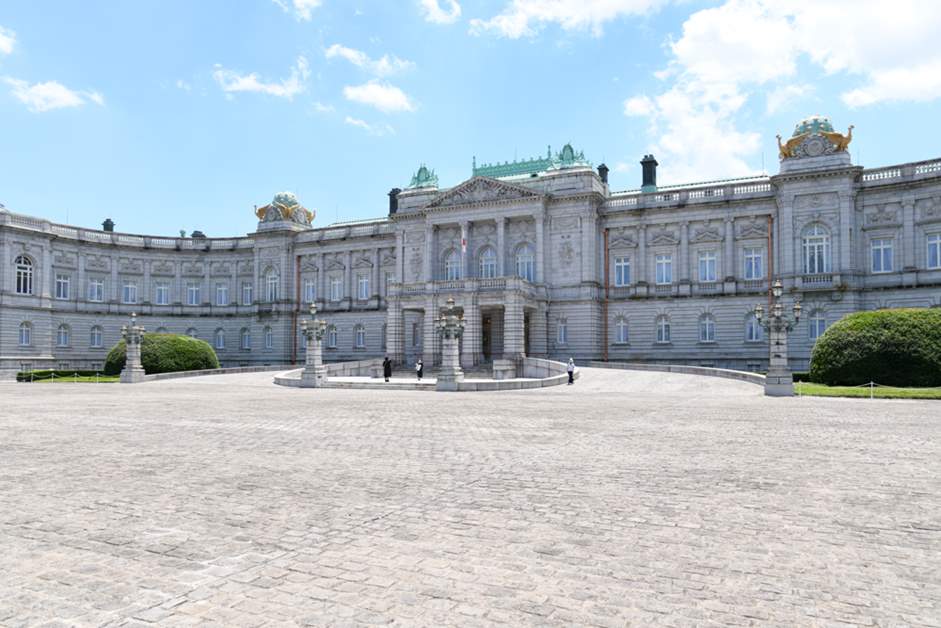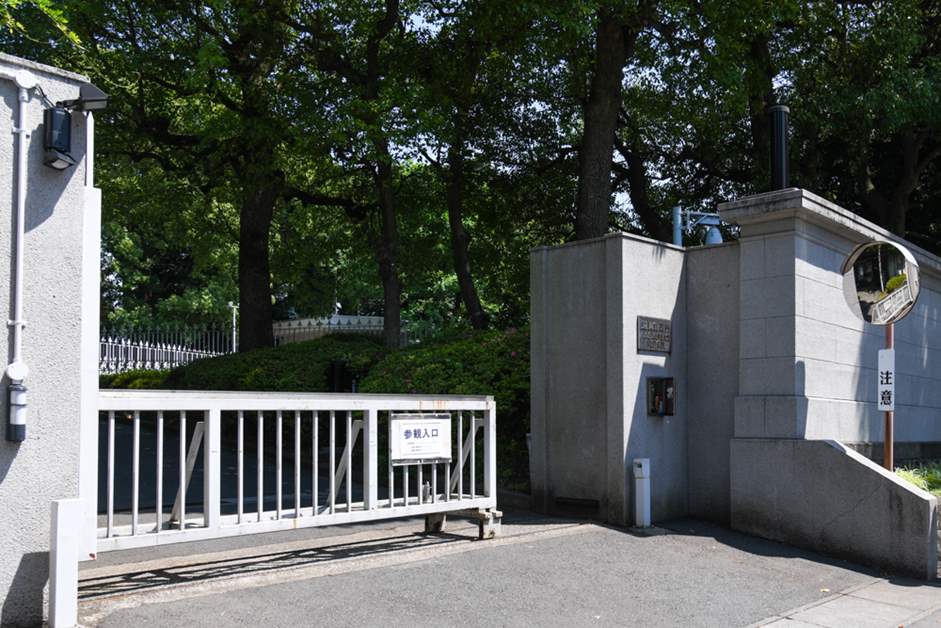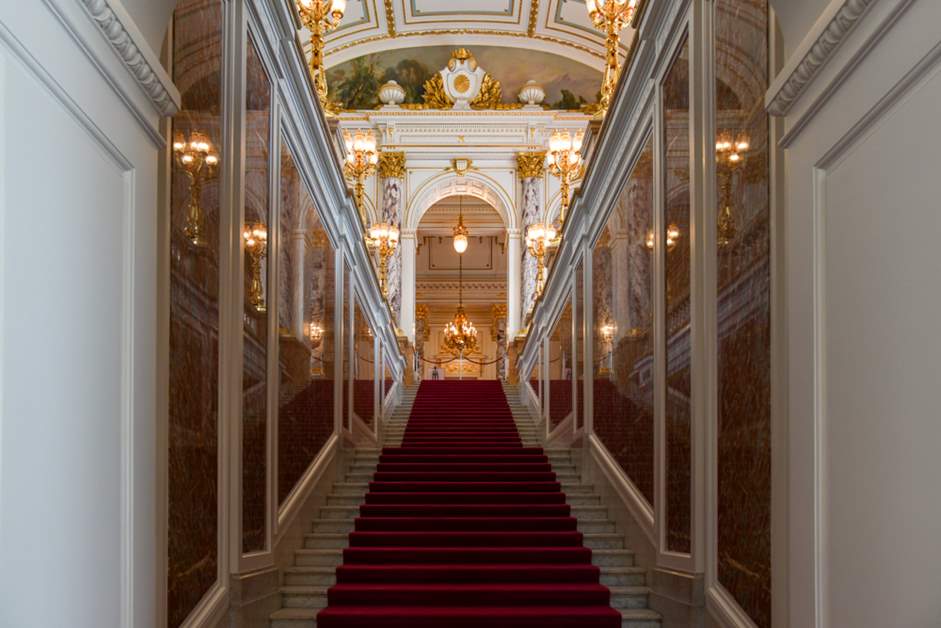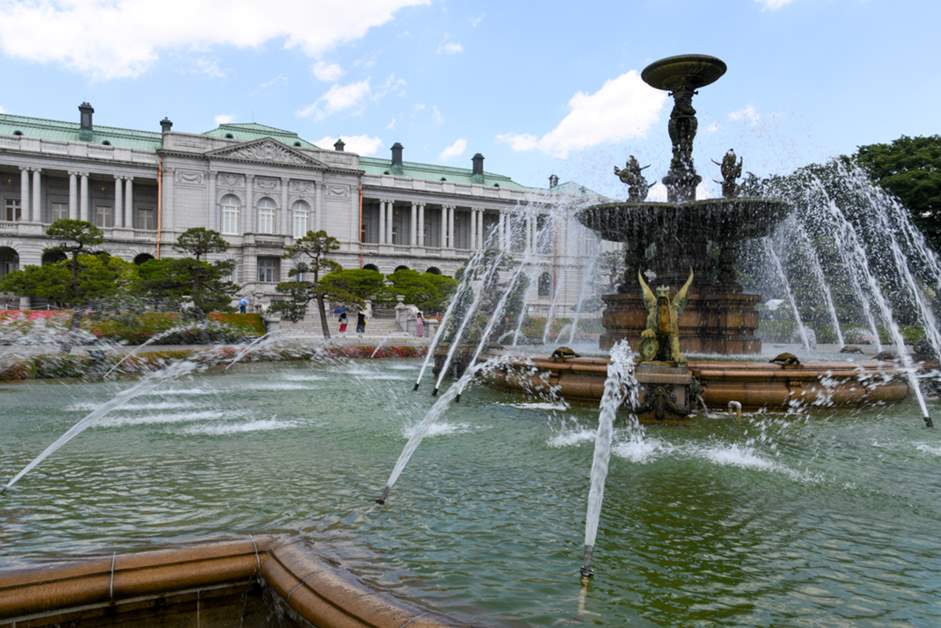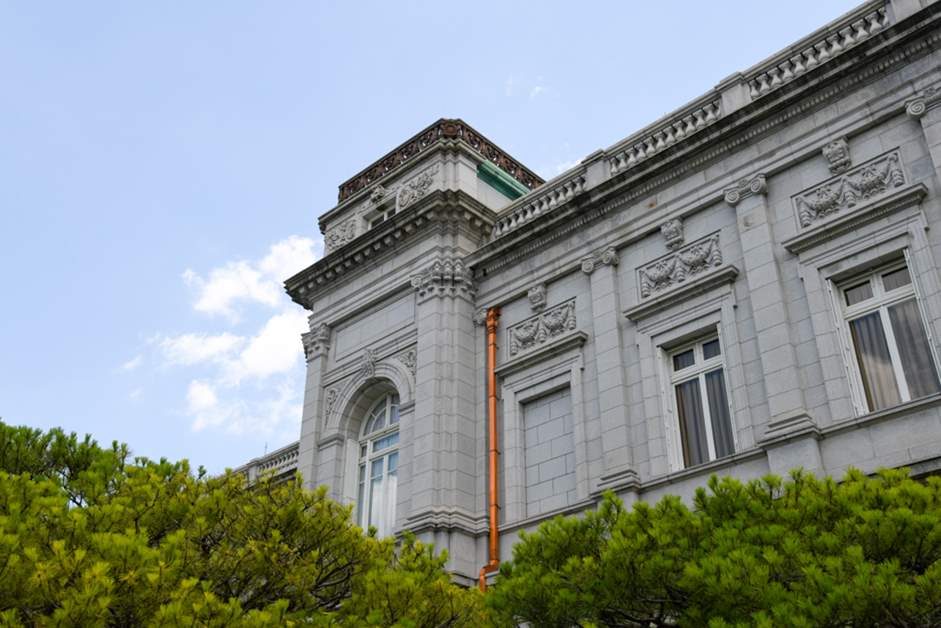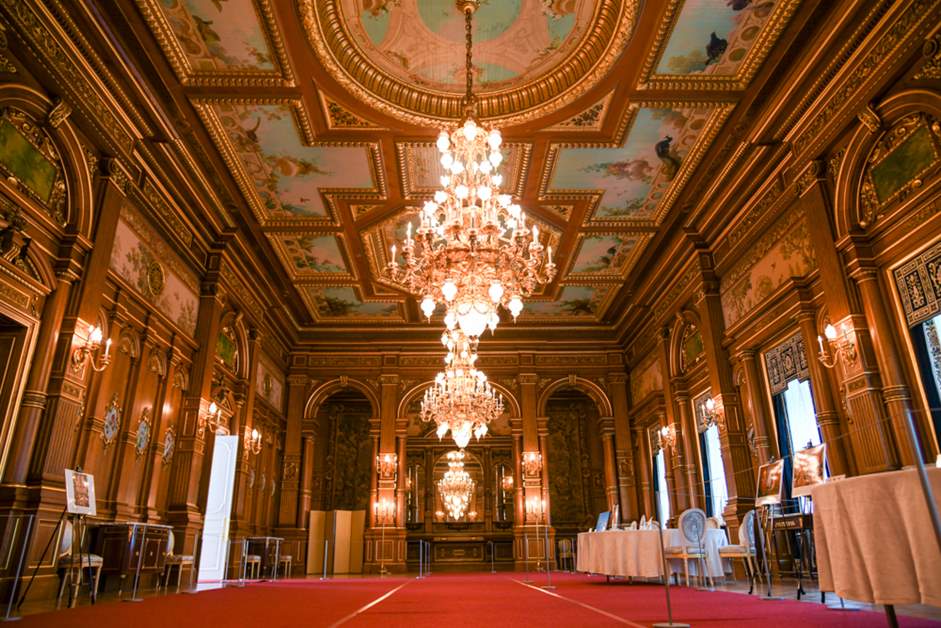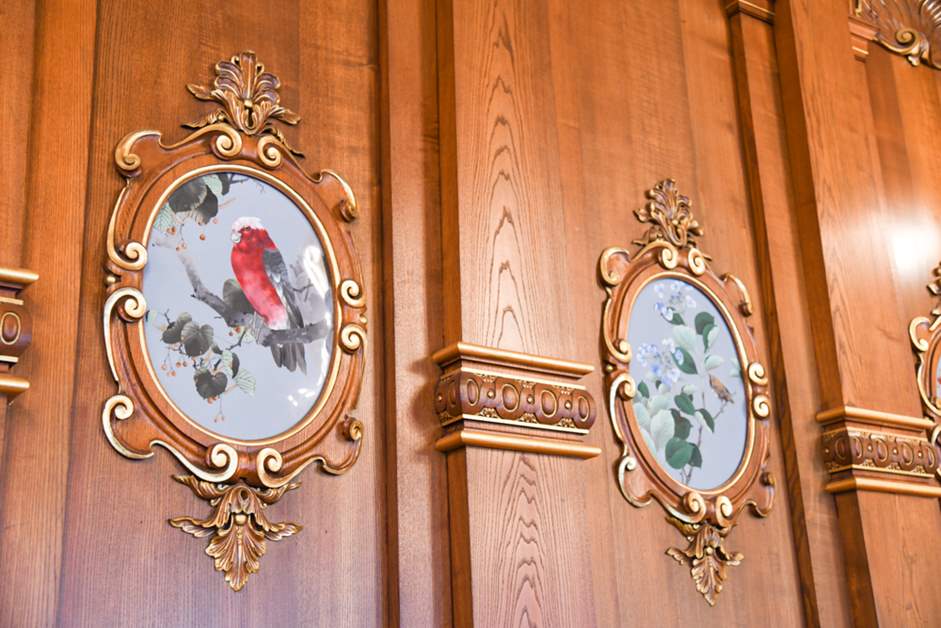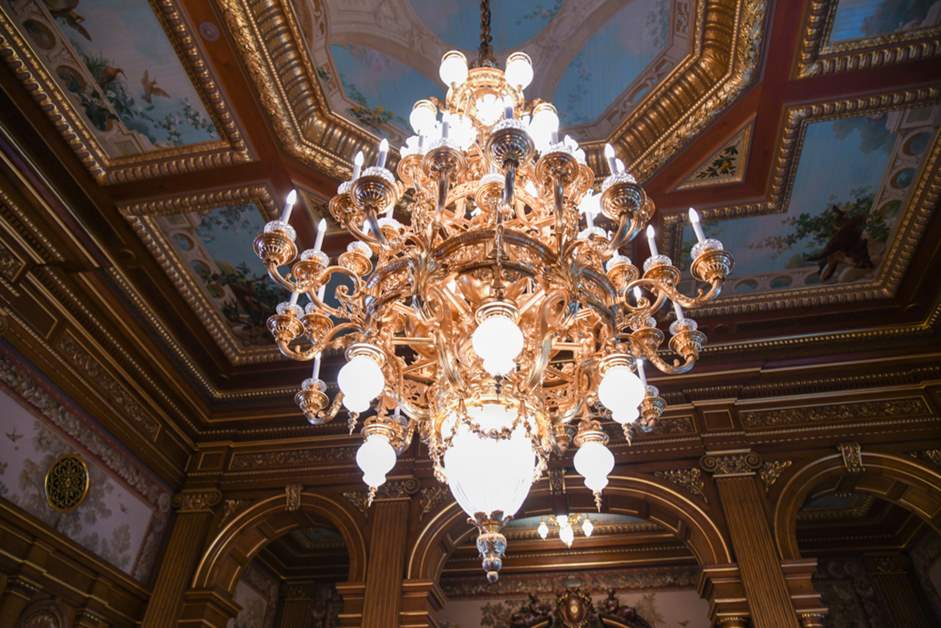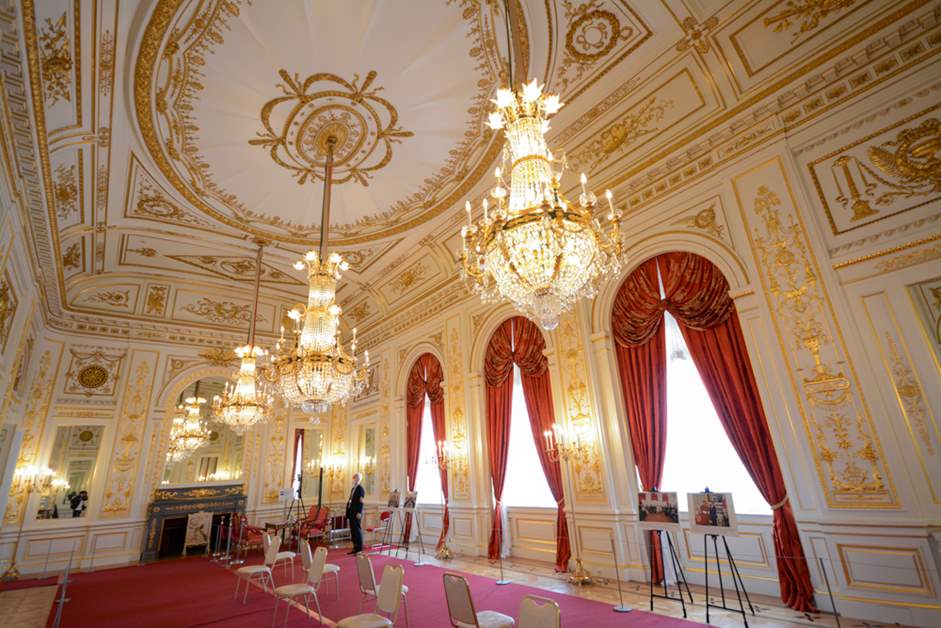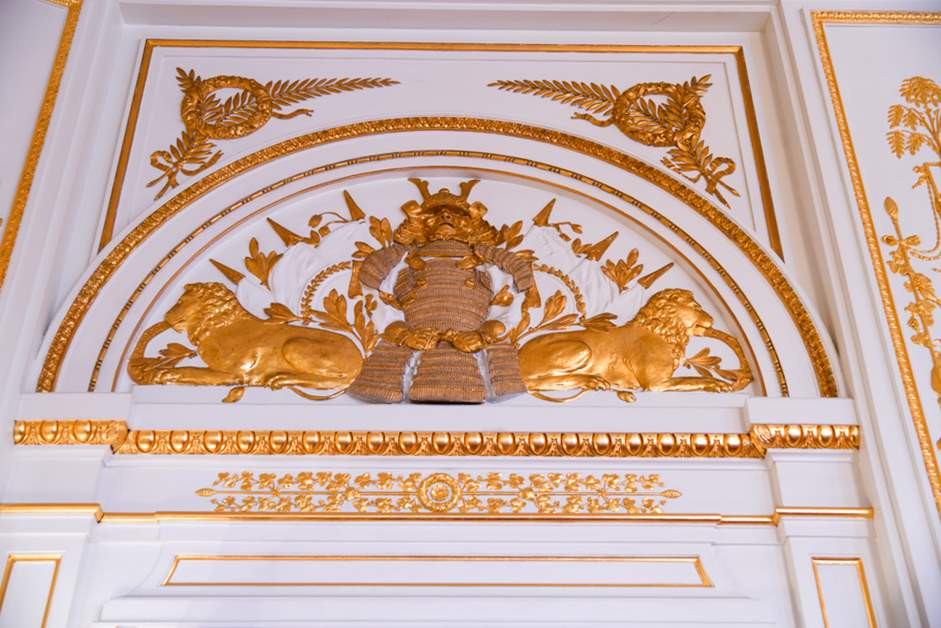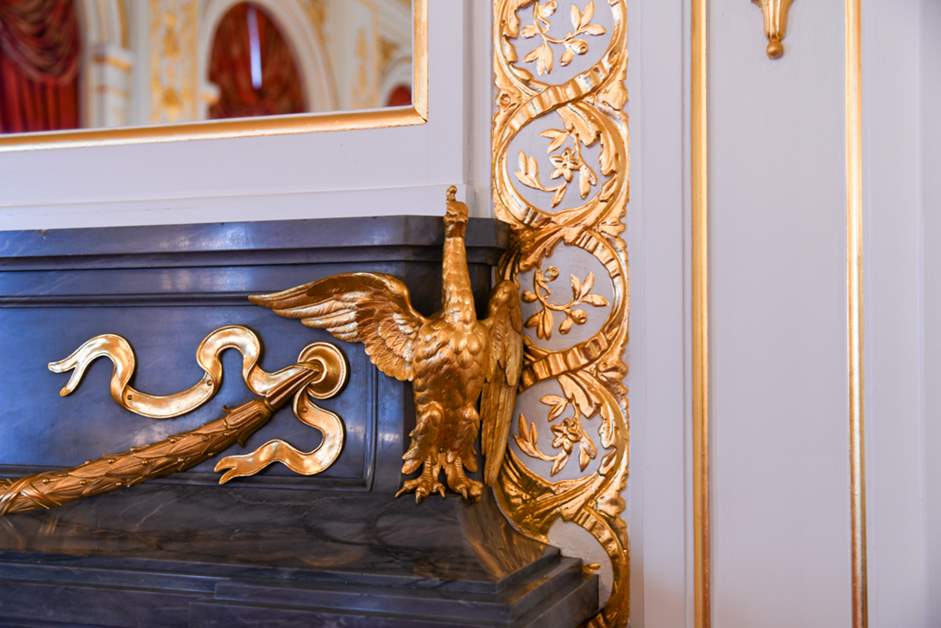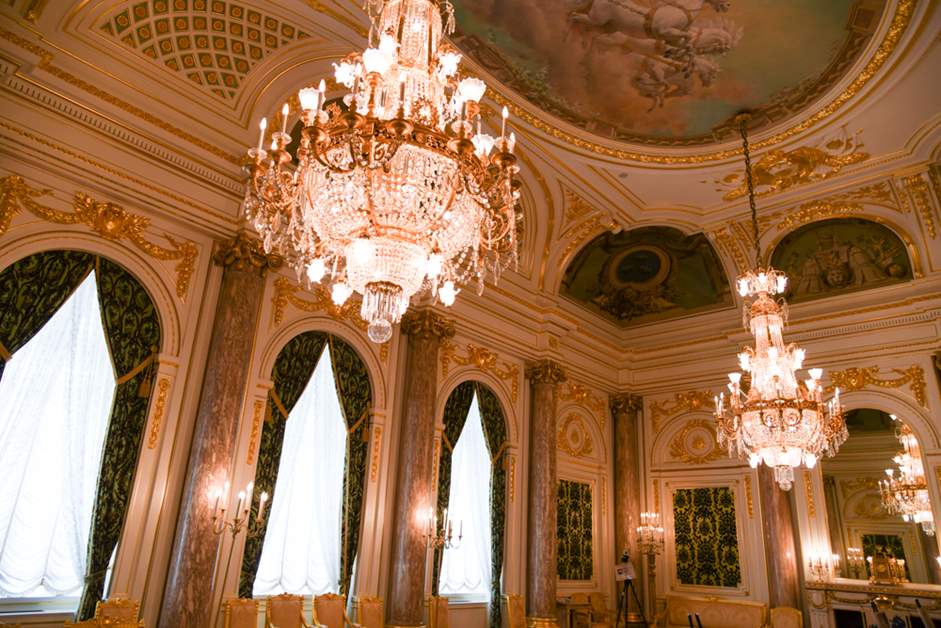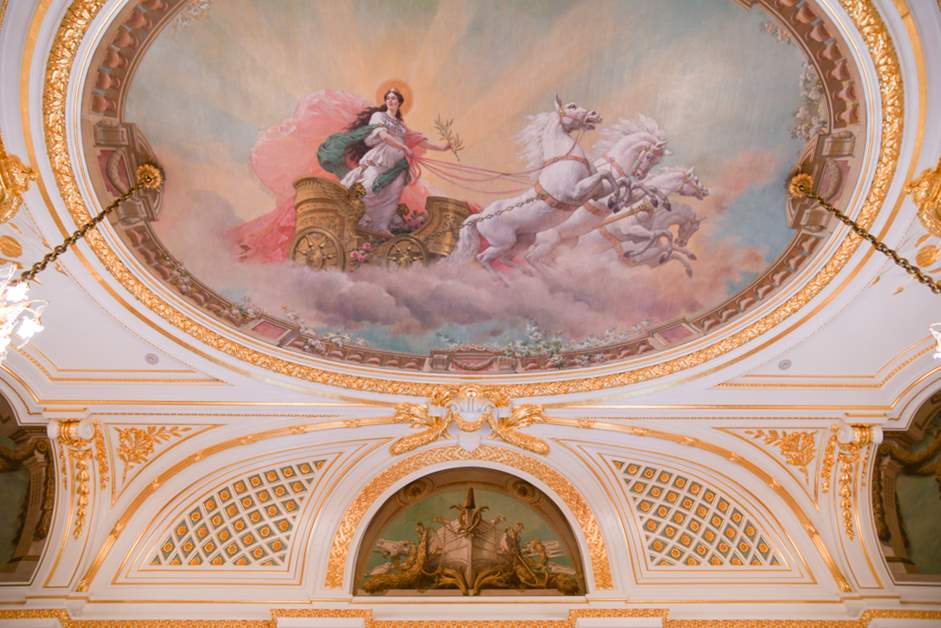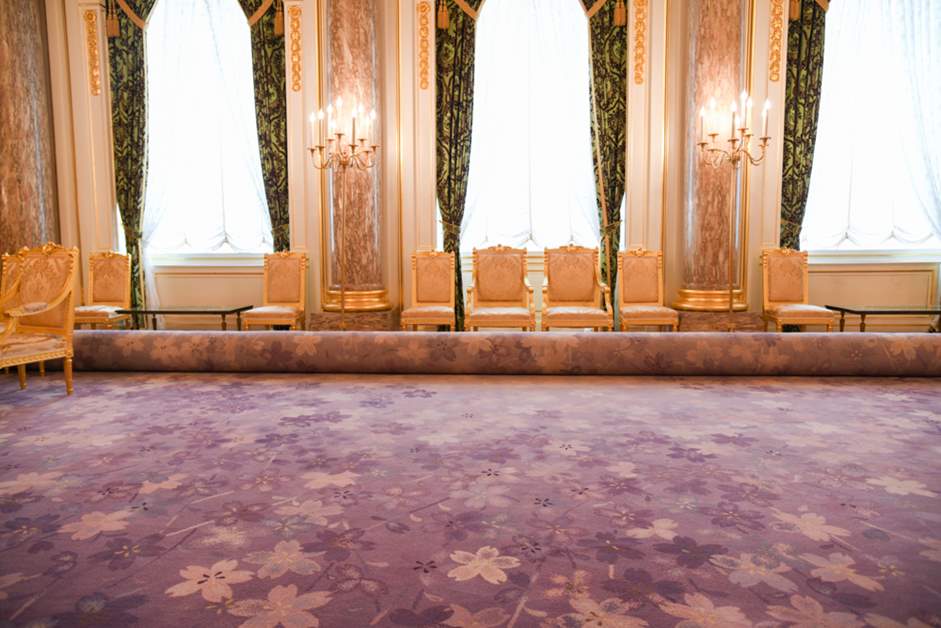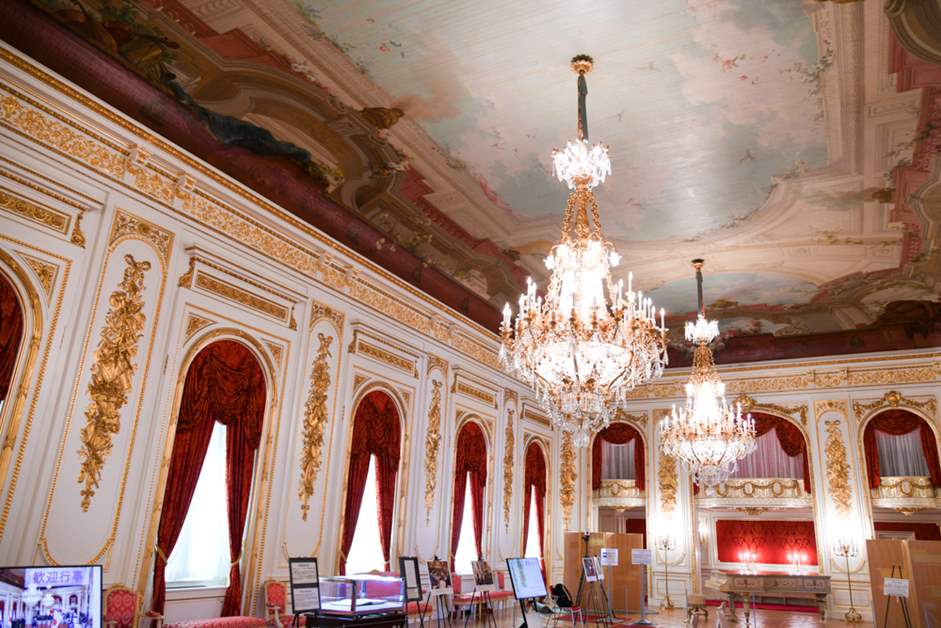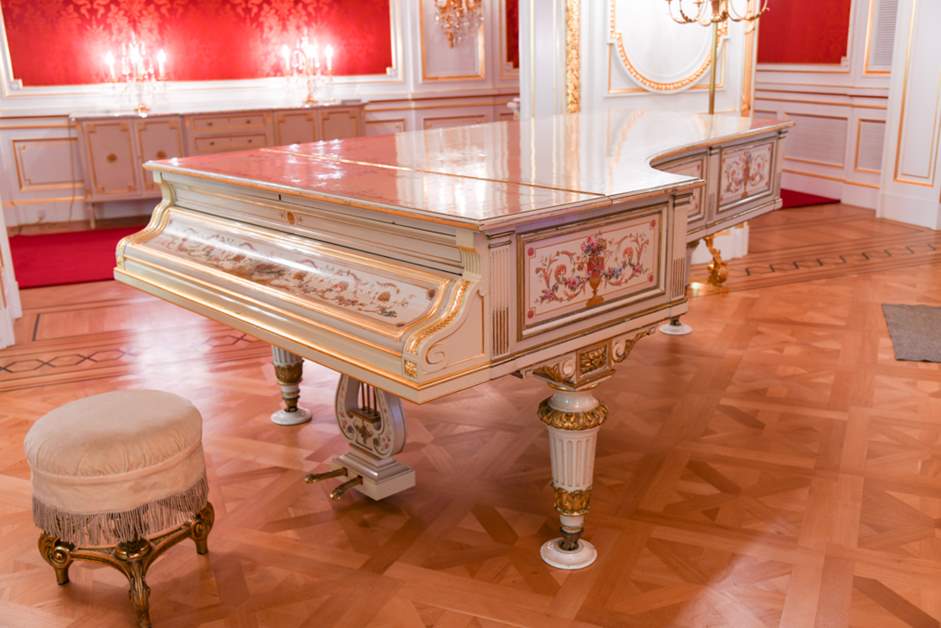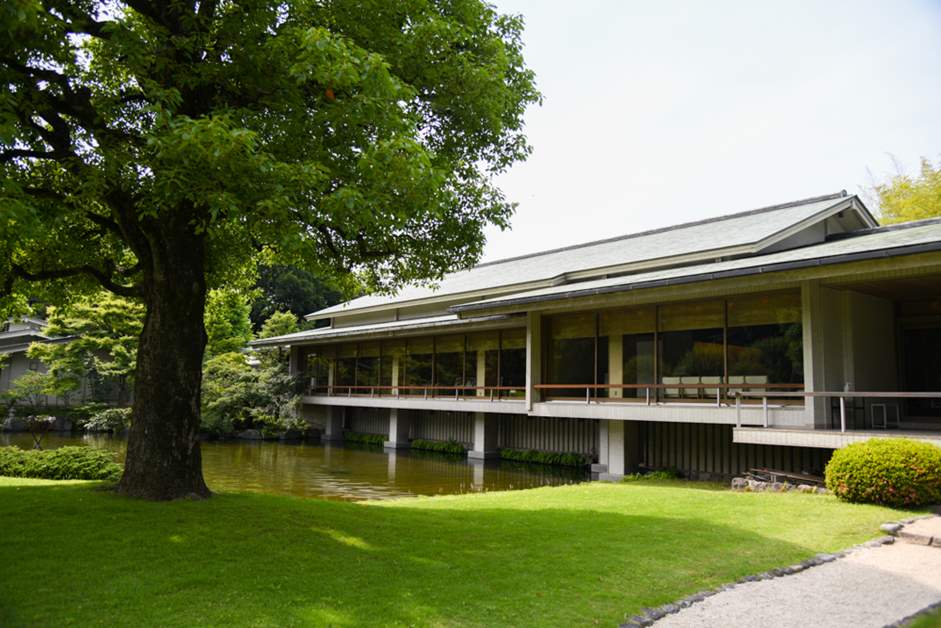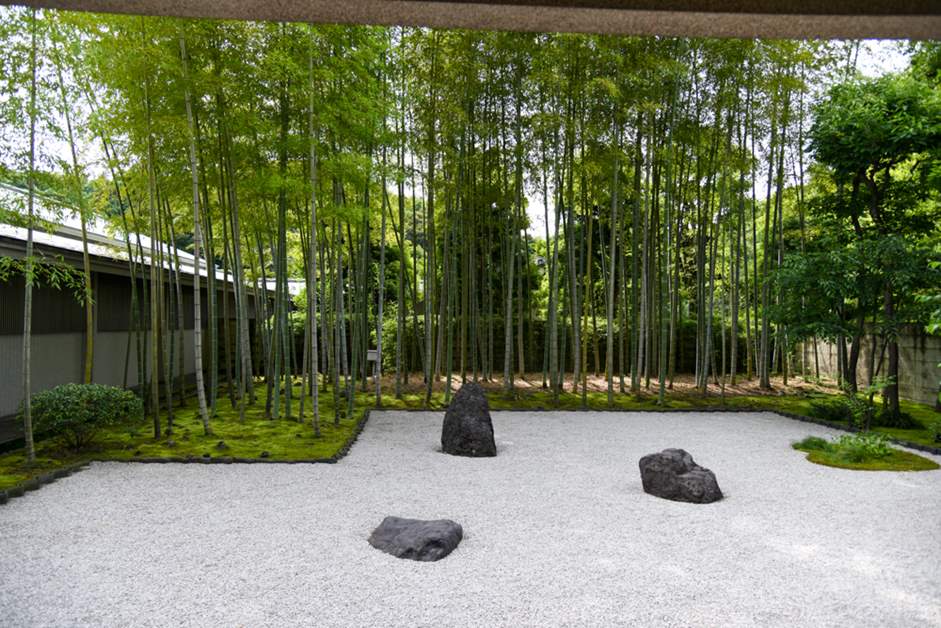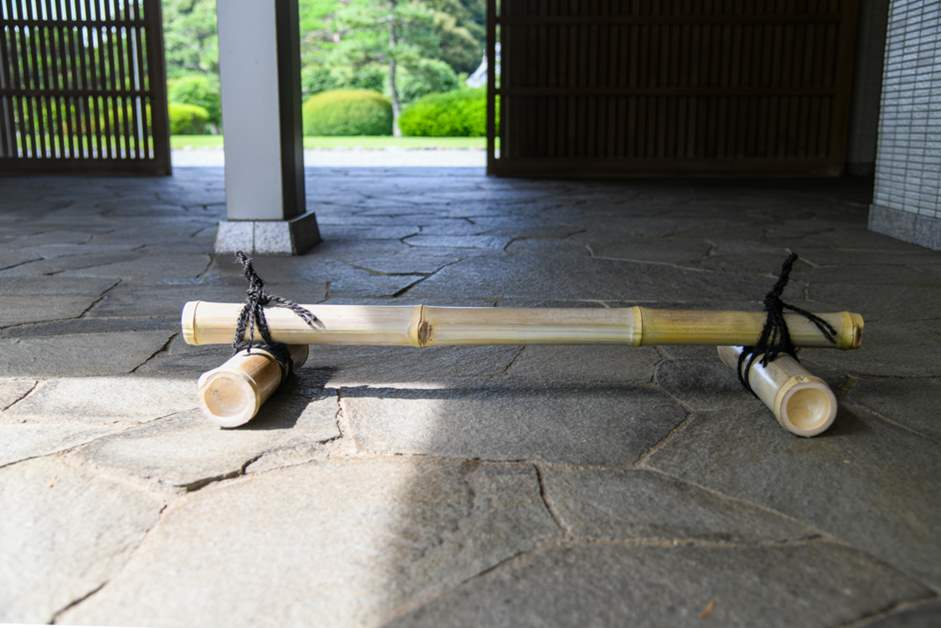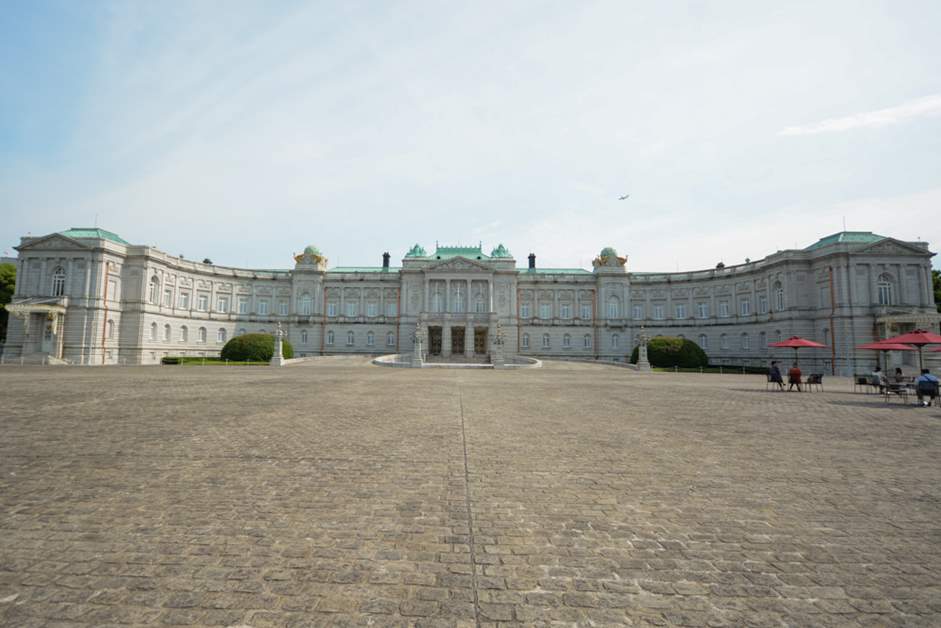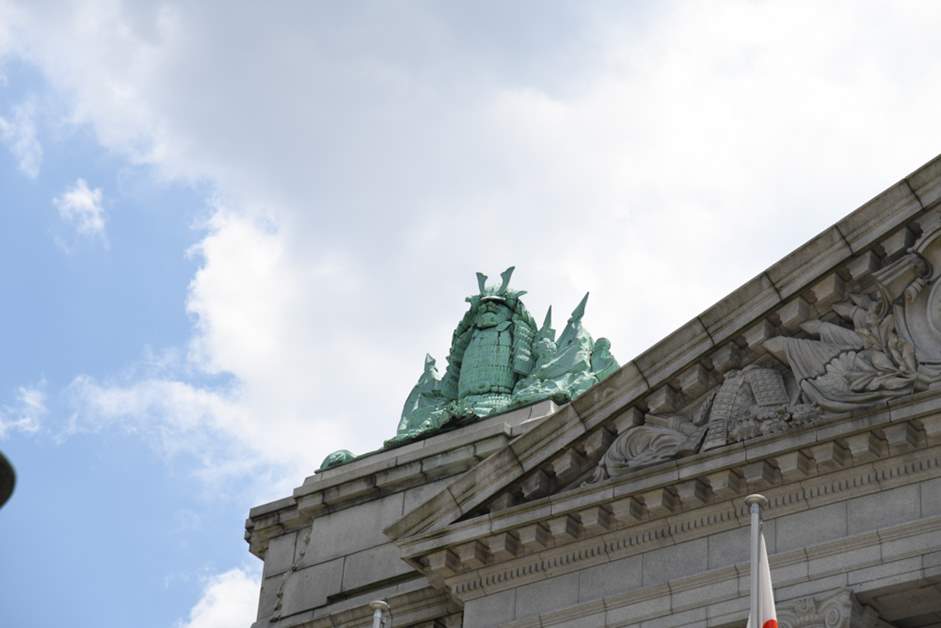Visit the former Akasaka Detached Palace of the State Guest House in Akasaka! Feel the beauty and technology of Meiji Japan at the only national treasure building in Minato Ward, Tokyo
When U.S. President Joseph Biden visited Japan in May of this year, he and Japanese Prime Minister Fumio Kishida held a summit meeting at the Akasaka Rikyu, a state guesthouse located in Moto-Akasaka, Minato-ku. This facility is used as a venue for meetings and hospitality when kings, heads of state, and other foreign dignitaries visit. Did you know that it is actually open to the public?
Gorgeous Western architecture in former Akasaka
The Akasaka Imperial Villa is a majestic Western-style building standing in Moto-Akasaka, Minato-ku, Tokyo. The main gate is just in front of the northern end of Minato Ward, and the nearest station to the entrance is Yotsuya Station on the JR and Tokyo Metro lines.
The entrance to the museum is not the Main Gate, which is currently undergoing renovation, but the West Gate, located on the sidewalk on the right side of the road from the Yotsuya Station side. After passing through the gate, you will go through a baggage check, etc., and purchase a ticket to enter the museum.
There are three main areas that can be visited: the main building, the garden (main and front gardens), and the Japanese-style annex. Visits to the Japanese-style annex are guided tours and require advance reservations.
The main building is a sprawling structure with two stories above ground and one below, with a total floor area of approximately 15,000 square meters. Public tours focus on the four rooms that are still used for summit meetings and hospitality. First, enter the building through the west entrance and go to the central staircase looking up.
The main building is a sprawling structure with two stories above ground and one below, with a total floor area of approximately 15,000 square meters. Public tours focus on the four rooms that are still used for summit meetings and hospitality. First, enter the building through the west entrance and go to the central staircase looking up.
Under the central staircase
This is the midway point between the main entrance and the central staircase. Their Majesties the Emperor and Empress, as well as kings, presidents, and other heads of state visiting Japan from other countries, enter through here.
Studied Western styles and techniques to bring together the best of the time.
Now, let me touch on the history of Akasaka Rikyu, the State Guest House.
During the Edo period, the Edo Nakaya residence of the Kishu Tokugawa family was located here. The place was given to the imperial family in the Meiji era, and following a fire in the Imperial Palace in 1873, it became the temporary imperial residence of the Meiji Emperor for the next 16 years. Plans were then made to build the Crown Prince's (later Emperor Taisho) East Palace (the Crown Prince's residence), and Japan's first full-fledged Western-style palace was constructed over a period of about 10 years beginning in 1899.
During the Edo period, the Edo Nakaya residence of the Kishu Tokugawa family was located here. The place was given to the imperial family in the Meiji era, and following a fire in the Imperial Palace in 1873, it became the temporary imperial residence of the Meiji Emperor for the next 16 years. Plans were then made to build the Crown Prince's (later Emperor Taisho) East Palace (the Crown Prince's residence), and Japan's first full-fledged Western-style palace was constructed over a period of about 10 years beginning in 1899.
The architect who oversaw the design was Toguma Katayama, an engineer at the Imperial Household Ministry's Shokuryo (Interior Design Office). Katayama, who studied under the British architect Josiah Conder, was a leading figure in Western architecture in Japan at the time, along with fellow architect Kingo Tatsuno, who designed Tokyo Station and other structures.
Katayama had lived in Russia and Germany for a total of two years, and when constructing the Crown Prince's Palace, he also made a survey of various places in Europe. Based on his knowledge, Katayama designed a brand-new architecture, including a neo-Baroque exterior, which was not available in Japan at that time. However, there was one problem with Japanese palace architecture that Western palaces did not have. The Japanese palaces, which are subject to frequent earthquakes, had to be more earthquake resistant than their Western counterparts. Therefore, Katayama imported steel frames from the U.S. and reinforced them with bricks.
The palace, which was completed with Western technology and furnishings combined with Japanese essence, became such an opulent building that those involved in its construction said it was too extravagant.
From the Crown Prince's Palace to Akasaka Rikyu and the State Guest House
After seeing the central staircase, we will visit the "Kacho no Ma" (Flower and Bird Room) on the second floor. Formerly called the "Feast Room," this room is now used as an official banquet hall for state guests. The room is decorated in the Henri II style, which originated in France, with numerous flower and bird paintings on the ceiling and walls.
Among them, the 30 cloisonne frames hanging on the walls are original paintings by Watanabe Shotei, a Japanese-style painter who was a master of flower-and-bird paintings, which were vividly reproduced by cloisonne enamel artist Tawokawa Sosuke, even down to the blurred areas, using his own wireless cloisonne enamel technique.
Although the building was originally built as the Crown Prince's Palace, the Crown Prince never actually lived here, although the Showa Emperor made it his home for about five years after the Great Kanto Earthquake of 1923, and the current Emperor, His Majesty the Emperor, lived here for a total of one and a half years as Crown Prince. For a long time, however, it was treated as a villa of the Emperor's family and managed as the "Akasaka Detached Palace. It was not until after World War II, when the property was transferred to the national government, that it became a full-fledged guesthouse.
After the war, the building was used as the National Diet Library and the Impeachment Court, etc. After the first Tokyo Olympics, the need for facilities to entertain foreign guests increased, and the idea of converting Akasaka Rikyu into a guesthouse was proposed.
Walk through a one-of-a-kind space composed of a blend of Japanese and Western styles.
The tour course continues through the main hall, which was looked up from the central staircase, to the "Sairan Room," which was called the "Second Room" at the time of its construction, and whose highlight is the gilded reliefs that cover the entire room.
While one would expect it to faithfully follow Western forms, reliefs of armored warriors can be seen on the wall above the entrance. In addition, the mantelpiece that adorns the fireplace is decorated with Japanese swords, a design that is uniquely Japanese. On the other hand, the decoration of the sacred bird "lran," a type of phoenix, is also a feature of the building.
The "Asahi no Ma" is the most prestigious room in the State Guest House. This room is used for summit meetings and other such events, and is also where distinguished guests say their farewells to the Emperor and Empress. The room is decorated in the Louis XVI style, with Ionic columns of Norwegian marble, and a ceiling painting of the Goddess of the Dawn with the rising sun in the background overhead.
Japanese designs are also scattered here. The four walls are covered with Kyoto Nishijin brocade, and the 57 paulownia crest can be seen on the ceiling at the four corners. Another feature of the building is the pictures on the walls depicting images of the army and the navy. In addition, 47 different kinds of purple threads are used for the rugs on the floor, creating a magnificent gradation that resembles cherry blossoms.
The fourth room to visit is the Hagoromo Room. Designed as a ballroom, this room features decorations related to music. Among the countless musical instruments decorated in relief on the walls are biwa, taiko drums, and other ancient Japanese instruments. In front of the orchestra box, there is a piano custom-made by Erard of France, which was once placed in the Imperial Palace. The piano, which was the favorite of Empress Kajun, is still in use, and pianists are sometimes invited to give concerts on it.
Volunteer guides are available in each room during the tour of the main building, so those who want to know more about the history of the museum should ask for a commentary.
The passion of an architect lying dormant in Minato Ward
Following the main building, you will pass through the main garden with its fountain pond to the Japanese-style annex "Yushintei" (Yu-shin-tei). This can be visited on a guided tour by reservation only.
This place is also frequently used for summit meetings.
Built in 1974, the museum has a tsuboniwa garden with bamboo plants, a hall where ikebana and Japanese dance performances are sometimes held, and a tea ceremony room.
After finishing the tour of the Japanese-style annex, move to the vestibule on the side of the main gate and take a final look at the dignified exterior from the front.
Sculptures of armor and helmets can also be seen on the roof of the main building. Witnessing the scale and splendor of the building, you will once again experience firsthand the passion of Katayama Toguma, who designed the building more than 100 years ago.
The Akasaka Imperial Villa, a state guesthouse, was built in the midst of the great changes that occurred with the modernization of the Meiji era, and was built with the combined efforts of the architecture, arts, and crafts worlds of the time, putting the prestige of the nation on the line. The gorgeous architecture, which is still in use today as a stage for diplomacy, is a must-visit spot even for history buffs. For information on visiting dates, fees, and how to make reservations for the Japanese-style annex, please visit the official website below.
Akasaka Rikyu Akasaka State Guest House Official Website
https://www.geihinkan.go.jp/akasaka/
Akasaka Rikyu Akasaka State Guest House Official Website
https://www.geihinkan.go.jp/akasaka/





